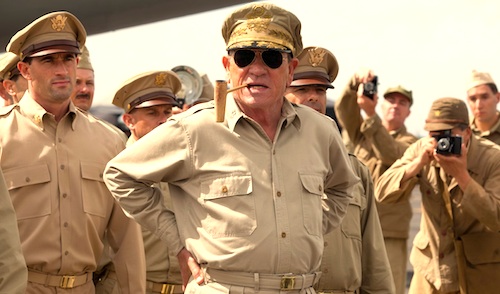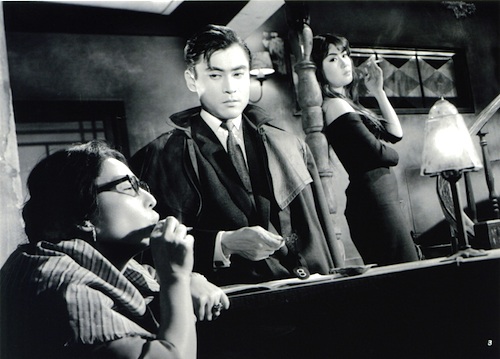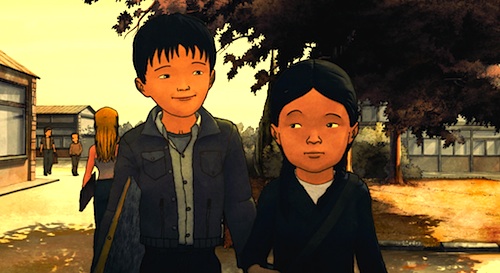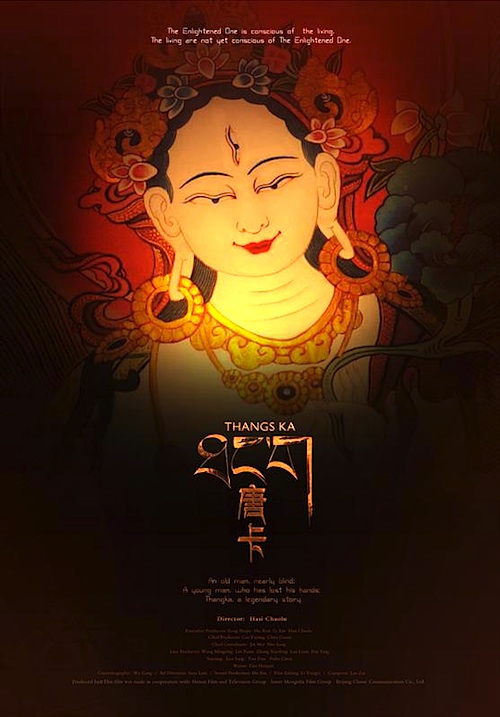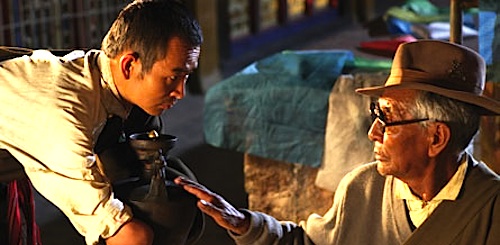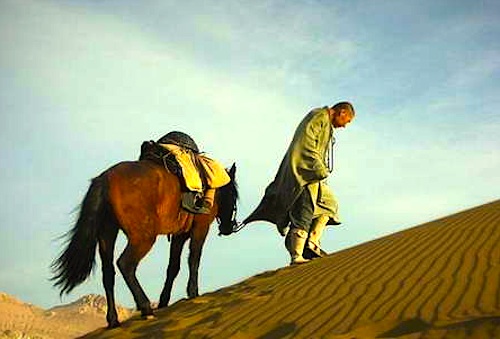By Joe Bendel. For displaced ronin, Ayothaya-era Thailand was not such a bad place to relocate. There was a considerable Japanese colony, steady work as mercenaries, and good diplomatic ties with the homeland. Unfortunately, a secret cabal is out to overturn the existing order, but they will have to contend with the legendary hero Yamada Nagamasa in Nopporn Watin’s Muay Thai Warrior (a.k.a. Yamada: the Samurai of Ayothaya), which releases today on DVD and Blu-ray from Well Go USA.
Attached to the Japanese Volunteer Army, Yamada and his comrades are tasked with apprehending roving gangs of Hongsawadee raiders, Ayothaya’s sworn enemies defeated but not vanquished by King Naresuan in the recent Elephant War. However, when Yamada and his men get their hands on a few (dead, of course) they are disturbed to find that they are Japanese. This is dangerous information that nearly costs Yamada his life. Fortunately, Kham and his fellow imperial bodyguards interrupt the ambush just in the nick of time.
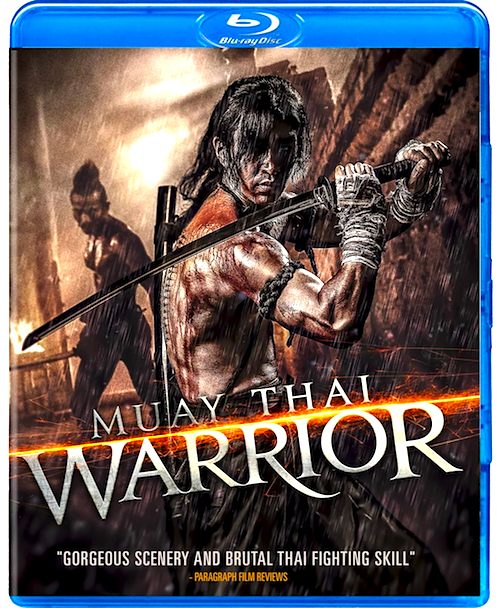 Badly beaten, Yamada is taken to Kham’s village to recuperate. It is the first time Yamada finds himself at peace, aside for the occasional assassin sent to rub him out. Kham’s sister Champa certainly makes an impression on him, but he also forges a deep friendship with the fierce Muay Thai fighter. With the help of the Buddhist monk and trusted advisor royal advisor Phra Khru, Yamada learns Muay Thai in hopes of joining the King’s elite bodyguards. He also has some unfinished business with his renegade countrymen.
Badly beaten, Yamada is taken to Kham’s village to recuperate. It is the first time Yamada finds himself at peace, aside for the occasional assassin sent to rub him out. Kham’s sister Champa certainly makes an impression on him, but he also forges a deep friendship with the fierce Muay Thai fighter. With the help of the Buddhist monk and trusted advisor royal advisor Phra Khru, Yamada learns Muay Thai in hopes of joining the King’s elite bodyguards. He also has some unfinished business with his renegade countrymen.
As an exercise in comparing and contrasting various forms of martial arts, Muay Thai definitely has the advantage in MTW. Whereas it utilizes knees and elbows to devastating effect, the styles of their rivals largely seem to involve impaling one’s self on your opponent’s sword. At least that is how it looks during the massive Hongsawadee beatdown. It is certainly cinematic though, as are the torch-lit showdowns between Yamada and the evil Japanese mastermind.
Seigi Ozeki is an engaging action figure, even if he does not quite have the skills of the real life mustachioed Muay Thai boxers cast around him. Likewise, Kanokkorn Jaicheun is a charismatic presence as Yamada’s chaste love interest. Most notably for Thai film patrons, Sorapong Chatree brings stately gravitas as Phra Khru, more or less reprising his role in HSH Prince Chatrichalerm Yukol’s epic Kingdom of War.
Lushly lensed by cinematographer Chuchart Nantittanyathada, MTW features stunning locales and rich period settings. Oddly enough, it is the fight choreography that is rather inconsistent. Still, it is a rather stirring depiction of honor and loyalty by choice rather than accident of birth. Conceived to mark 124 years of Thai-Japanese diplomatic relations (and just how did you observe the anniversary?), Muay Thai Warrior will certainly entertain fans of historicals loaded with action and intrigue. It is now available for home viewing from Well Go USA.
LFM GRADE: B-
Posted on March 5th, 2013 at 11:34am.
